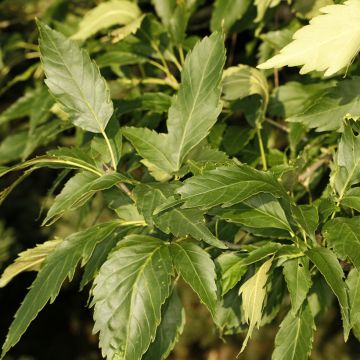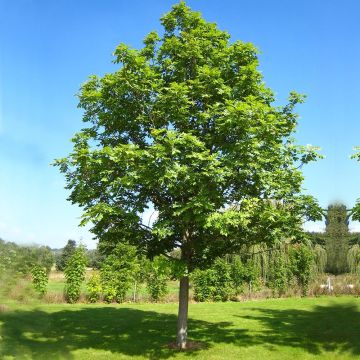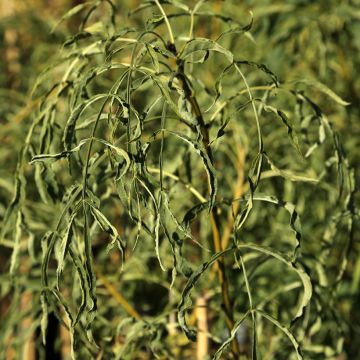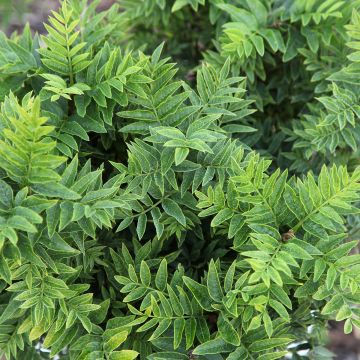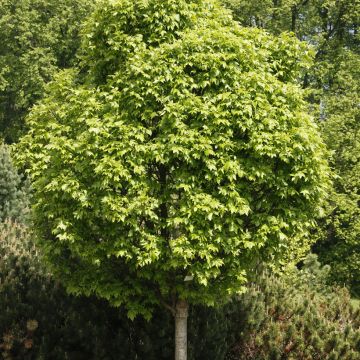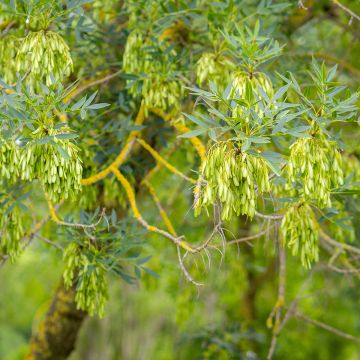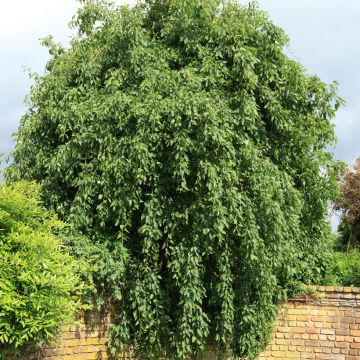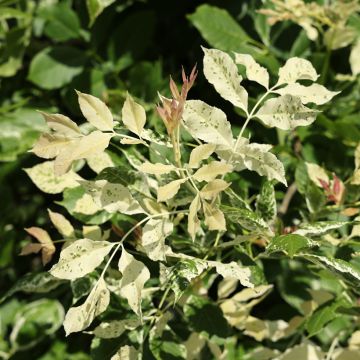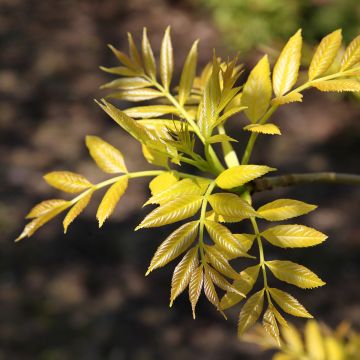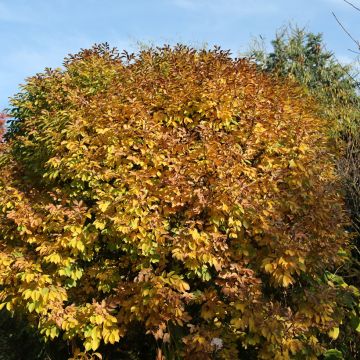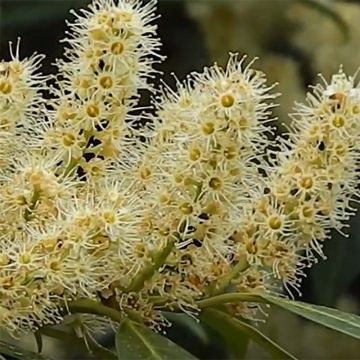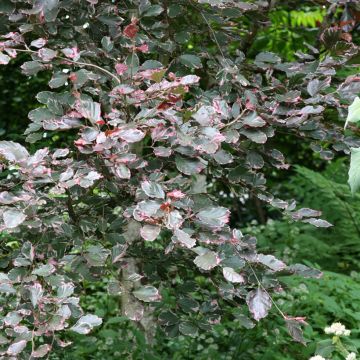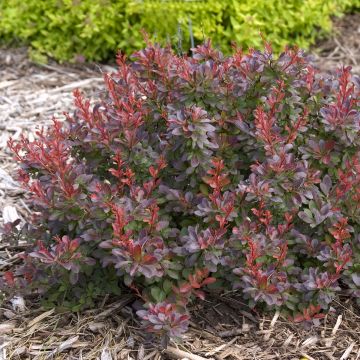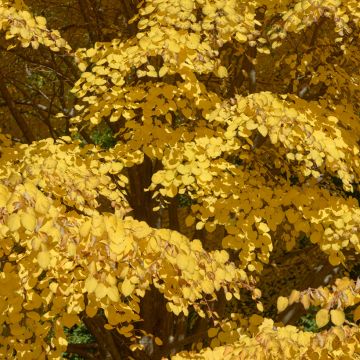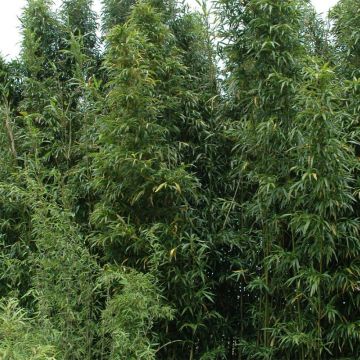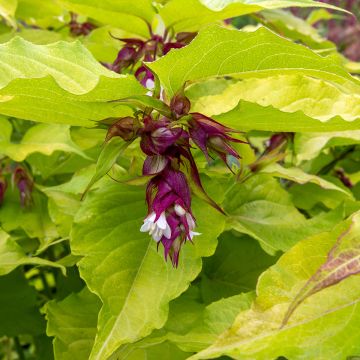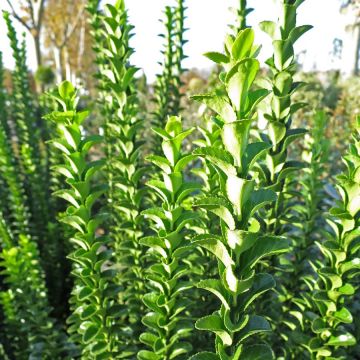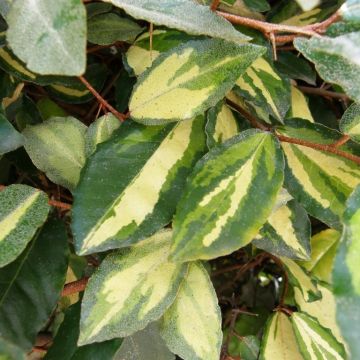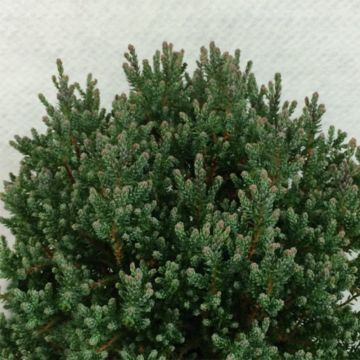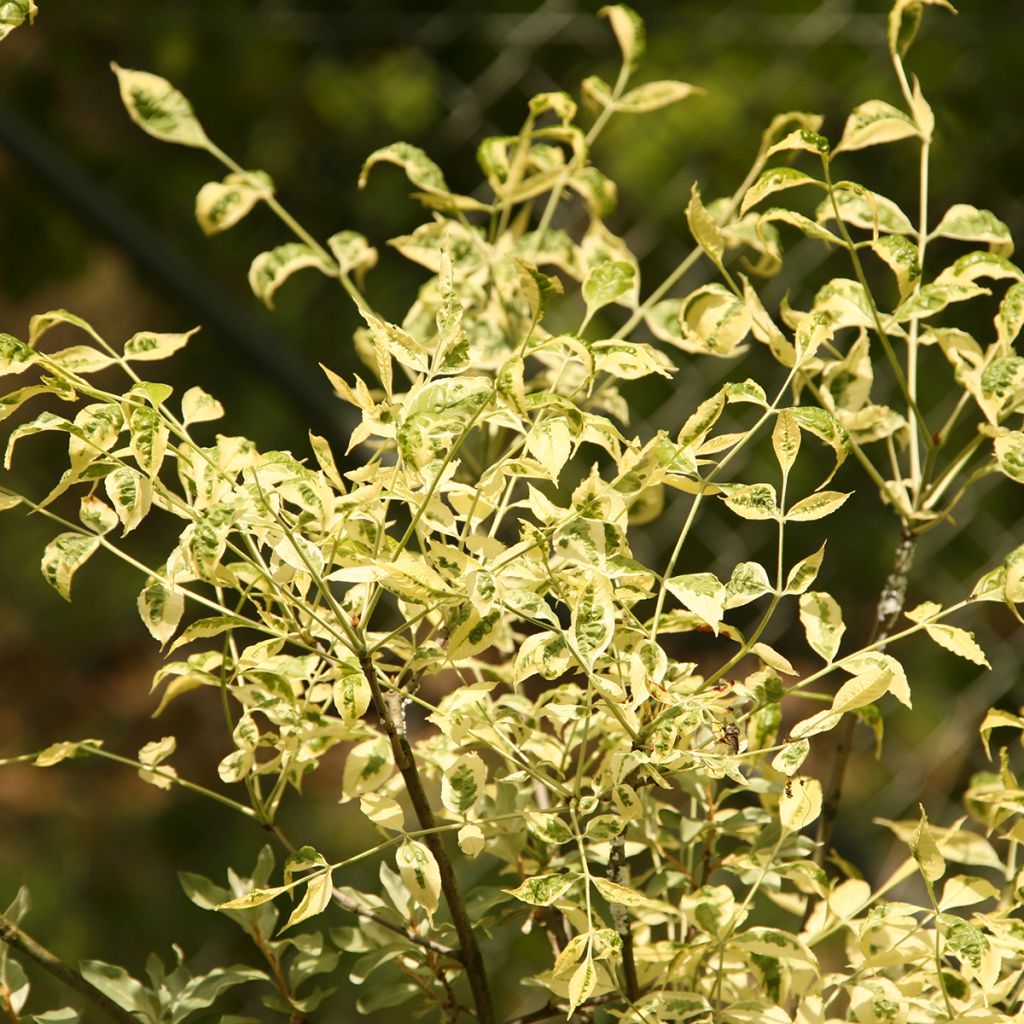

Fraxinus pennsylvanica Argenteomarginata - Ash
Fraxinus pennsylvanica Argenteomarginata - Ash
Fraxinus pennsylvanica Argenteomarginata
Green Ash, Red Ash
This item cannot be shipped to the selected country
Oversize package delivery charge from €6.90
More information
Schedule delivery date,
and select date in basket
This plant carries a 24 months recovery warranty
More information
We guarantee the quality of our plants for a full growing cycle, and will replace at our expense any plant that fails to recover under normal climatic and planting conditions.
Oversize package: home delivery by special carrier from €6.90 per order..
Express home delivery from €8.90.
Does this plant fit my garden?
Set up your Plantfit profile →
Description
Fraxinus pennsylvanica 'Argenteomarginata', also known as the Variegated Pennsylvania Ash, is a slow-growing tree that can reach a height of 6 to 8 m. It is appreciated for its slender habit and foliage variegated with green and cream-white, becoming even brighter in the summer. It adapts to all types of gardens, provided it finds a suitable location for its growth, and requires little care. Its maintenance is limited to light pruning to remove reverted branches on which only green leaves will appear. Resistant to air pollution, it adapts to urban conditions. A sunny or semi-shaded position, with light shading, is preferable to avoid leaf burn. In the garden, planted in front of a darker vegetation background, it will create contrast and brighten the space.
Fraxinus pennsylvanica, commonly known as the Red Pennsylvania Ash, is a tree of the olive family, just like the olive tree, jasmine, privet, or lilac. It is mainly found in North America, over a wide range from the Atlantic coast to Colorado, Alberta, and Montana in the west. Generally, its dimensions range from 12 to 25 metres in height and its trunk does not exceed 60 cm in diameter. In autumn, its foliage turns a beautiful, particularly attractive lemon yellow. It is very resistant to pollution and diseases, so often used as a street tree.
The 'Argenteomarginata' variety was discovered in Germany in 1865 and introduced to the market in 1889 by the Späth nurseries in Berlin, under the name Fraxinus americana 'Argenteomarginata'. It forms a slender tree with a straight trunk and an elliptical, but irregular, crown. It is slow-growing and reaches an adult size (15 to 20 years old) of 6 to 8 m in height with a spread of about 3 to 5 m. Numerous rigid branches, with smooth grey bark, bear 15 to 25 cm long leaves, composed of 5 to 9 lanceolate leaflets, 3 to 5 cm long and pointed at the end, almost always deformed (bulging). The leaf is speckled with tender green and broadly bordered with cream-white. This deciduous tree that loses its leaves in autumn does not produce flowers or fruits.
The Variegated Pennsylvania Ash is a medium-sized tree that grows in a free form, making it an excellent choice for nature lovers. Its elegant silhouette and colourful foliage bring a touch of originality to your landscape. It is robust and resistant to winter cold (down to -30C°). It tolerates slightly acidic to neutral soils and requires deep, rich, moist soils with good drainage. A sunny exposure is preferable, but it can tolerate a slightly shaded location. It is sensitive to stagnant water and drought conditions, with leaves burning in high heat. It can be planted alone or in groups for filtered shade or to add colour and light to the garden. It is recommended for gardens, parks, streets, squares, and large lawns.
Report an error about the product description
Plant habit
Foliage
Safety measures
Botanical data
Fraxinus
pennsylvanica
Argenteomarginata
Oleaceae
Green Ash, Red Ash
Cultivar or hybrid
atteinterespiratoire
Cette plante peut entraîner des symptômes allergiques.
Evitez de la planter si vous ou vos proches souffrez de rhinite saisonnière ("rhume des foins").
Davantage d'informations sur https://plantes-risque.info
Other Fraxinus - Ash tree
Planting and care
Plant your Fraxinus pennsylvanica Argenteomarginata in autumn or spring, choose an open location, in non-scorching sunlight, where the soil is deep and keep in mind the space it will take up in the long term. If necessary, create a drainage pit with stones if your soil is suffocating. If your soil is poor, adding leaf compost will be beneficial. Maintain regular watering during the summer following planting and make sure to protect it from prolonged droughts for another year, mulching can help keep the base cool and space out watering. It is important to keep in mind that this tree needs consistently moist soil, at least at depth. It is perfectly frost-resistant. Pruning involves balancing the tree's habit every 3 years or so by aerating the centre of the canopy.
Planting period
Intended location
Care
This item has not been reviewed yet - be the first to leave a review about it.
Striking foliage shrubs
Haven't found what you were looking for?
Hardiness is the lowest winter temperature a plant can endure without suffering serious damage or even dying. However, hardiness is affected by location (a sheltered area, such as a patio), protection (winter cover) and soil type (hardiness is improved by well-drained soil).

Photo Sharing Terms & Conditions
In order to encourage gardeners to interact and share their experiences, Promesse de fleurs offers various media enabling content to be uploaded onto its Site - in particular via the ‘Photo sharing’ module.
The User agrees to refrain from:
- Posting any content that is illegal, prejudicial, insulting, racist, inciteful to hatred, revisionist, contrary to public decency, that infringes on privacy or on the privacy rights of third parties, in particular the publicity rights of persons and goods, intellectual property rights, or the right to privacy.
- Submitting content on behalf of a third party;
- Impersonate the identity of a third party and/or publish any personal information about a third party;
In general, the User undertakes to refrain from any unethical behaviour.
All Content (in particular text, comments, files, images, photos, videos, creative works, etc.), which may be subject to property or intellectual property rights, image or other private rights, shall remain the property of the User, subject to the limited rights granted by the terms of the licence granted by Promesse de fleurs as stated below. Users are at liberty to publish or not to publish such Content on the Site, notably via the ‘Photo Sharing’ facility, and accept that this Content shall be made public and freely accessible, notably on the Internet.
Users further acknowledge, undertake to have ,and guarantee that they hold all necessary rights and permissions to publish such material on the Site, in particular with regard to the legislation in force pertaining to any privacy, property, intellectual property, image, or contractual rights, or rights of any other nature. By publishing such Content on the Site, Users acknowledge accepting full liability as publishers of the Content within the meaning of the law, and grant Promesse de fleurs, free of charge, an inclusive, worldwide licence for the said Content for the entire duration of its publication, including all reproduction, representation, up/downloading, displaying, performing, transmission, and storage rights.
Users also grant permission for their name to be linked to the Content and accept that this link may not always be made available.
By engaging in posting material, Users consent to their Content becoming automatically accessible on the Internet, in particular on other sites and/or blogs and/or web pages of the Promesse de fleurs site, including in particular social pages and the Promesse de fleurs catalogue.
Users may secure the removal of entrusted content free of charge by issuing a simple request via our contact form.
The flowering period indicated on our website applies to countries and regions located in USDA zone 8 (France, the United Kingdom, Ireland, the Netherlands, etc.)
It will vary according to where you live:
- In zones 9 to 10 (Italy, Spain, Greece, etc.), flowering will occur about 2 to 4 weeks earlier.
- In zones 6 to 7 (Germany, Poland, Slovenia, and lower mountainous regions), flowering will be delayed by 2 to 3 weeks.
- In zone 5 (Central Europe, Scandinavia), blooming will be delayed by 3 to 5 weeks.
In temperate climates, pruning of spring-flowering shrubs (forsythia, spireas, etc.) should be done just after flowering.
Pruning of summer-flowering shrubs (Indian Lilac, Perovskia, etc.) can be done in winter or spring.
In cold regions as well as with frost-sensitive plants, avoid pruning too early when severe frosts may still occur.
The planting period indicated on our website applies to countries and regions located in USDA zone 8 (France, United Kingdom, Ireland, Netherlands).
It will vary according to where you live:
- In Mediterranean zones (Marseille, Madrid, Milan, etc.), autumn and winter are the best planting periods.
- In continental zones (Strasbourg, Munich, Vienna, etc.), delay planting by 2 to 3 weeks in spring and bring it forward by 2 to 4 weeks in autumn.
- In mountainous regions (the Alps, Pyrenees, Carpathians, etc.), it is best to plant in late spring (May-June) or late summer (August-September).
The harvesting period indicated on our website applies to countries and regions in USDA zone 8 (France, England, Ireland, the Netherlands).
In colder areas (Scandinavia, Poland, Austria...) fruit and vegetable harvests are likely to be delayed by 3-4 weeks.
In warmer areas (Italy, Spain, Greece, etc.), harvesting will probably take place earlier, depending on weather conditions.
The sowing periods indicated on our website apply to countries and regions within USDA Zone 8 (France, UK, Ireland, Netherlands).
In colder areas (Scandinavia, Poland, Austria...), delay any outdoor sowing by 3-4 weeks, or sow under glass.
In warmer climes (Italy, Spain, Greece, etc.), bring outdoor sowing forward by a few weeks.

































